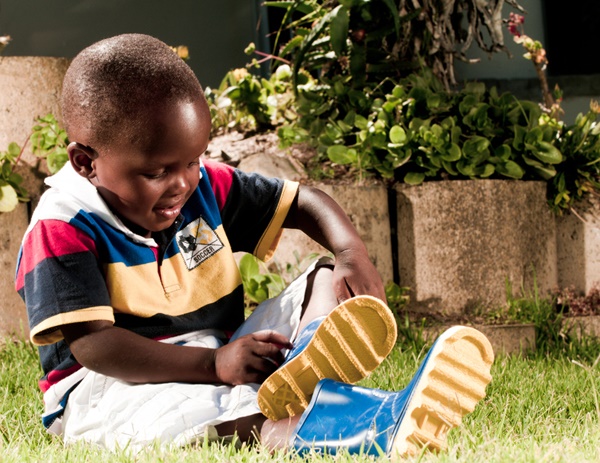
After six years your little one will go from being completely dependent to being independent. A big sign of their independence is that they can finally dress themselves without your help. But how do you assist your little one in reaching this important milestone? Your child will require the following skills for dressing:
- Range of motion: Your child must be able to move their joints voluntarily.
- Hand function: They must be able to reach, grasp, manipulate and release clothing.
- Coordination: Your child needs to be able to coordinate and plan movements. They need to be able to coordinate both hands to do the same task.
For example, they need
both hands to pull up a sock or buttoning buttons.
- Balance: Your child needs to be able to
maintain their balance while changing positions to get dressed or undressed.
- Perception: Various visual and body perception skills are needed to get
dressed.
- Vision: Your child must be able to focus on objects and follow them
with their eyes.
- Tactile sensation: Your child must be able to identify objects by feeling it, without using their vision. For example, when buttoning or closing a zipper behind their back. They must also be able to handle the sensation of different textured materials.
Luckily, your child doesn’t need all the skills right
away, and as they develop their dressing abilities will improve.
Your child’s dressing
skills will follow a predictable pattern:
- Dressing skills usually develops from the head to
the feet. Thus your child will first start to take or pull down a hat
rather than pulling off socks or shoes. You will also find that your child
will first start pushing their arm through a sleeve and then start to push
their legs through pants.
- Movements are more controlled at the joints closest to the midline of the
body (imaginary line dividing a body in a left and right side) like the neck,
shoulders and hips, than those joints that are further away from the midline,
like the hands, ankles and feet. Therefore children first start by using
their shoulders to push their arms through the sleeves. They will then learn
the refined finger skills to button buttons or using zips.
- Usually learning to undress comes before learning to dress.
One year: During
this year, children’s balance skills in sitting will improve; they will be able
to focus on an object and follow it with their eyes; and their hand function
will improve. They begin to cooperate in dressing by pushing their
arms through sleeves and their legs through pants. They might start to
try and pull off their shoes and remove their socks. They will also start
to hold out their arms and feet while you dress them.
Two years: During this year, children’s balance skills will improve and they will need no support in standing or walking. They can reach above their head and behind their back with both arms. Their hand function and coordination skills will continue to progress. They will pull of an unfastened coat and remove shoes if the laces are untied. When they’re closer to turning 3 they will assist in putting on socks and unbutton a large button. They will also start to try pull down pants with an elastic waist.
Three years: Movements
will continue to refine and their perceptual skills will improve, thus they
will be more aware of details of clothing and can find arm and leg holes more
easily. They will put on shoes without fasteners (may be on the wrong
foot) and put on a shirt and socks with some assistance.
Four years: Perceptual
skills will still continue to improve and children will know the difference
between the front and back of clothing. Their fine motor coordination
will also improve and they will be able to buckle shoes or belts, lace shoes,
put on socks correctly and remove a T-shirt independently.
Five years: By this age children will be able to reach behind their backs with both arms (normal for them to still lean forward to do so), allowing them to close a back zipper. They will generally get dressed and undressed without any help. They will also be able to tie and untie a knot.
Six years: Children
will now be able to button back buttons and tie a bow knot.
Mysmartkid is South Africa's leading programme for Early Childhood Development (ECD). Click here to join the programme.




 Publications
Publications
 Partners
Partners










